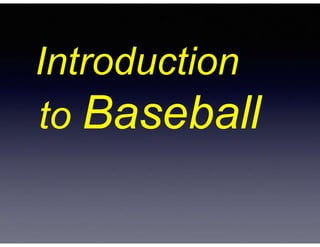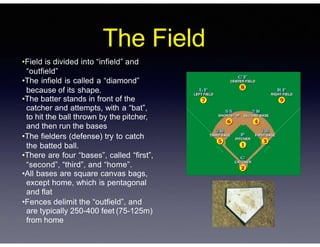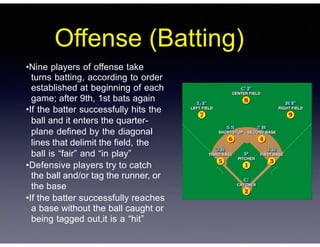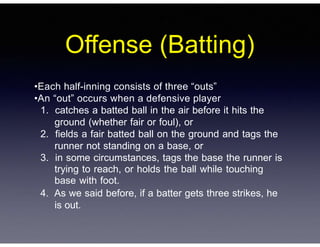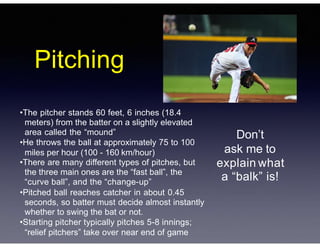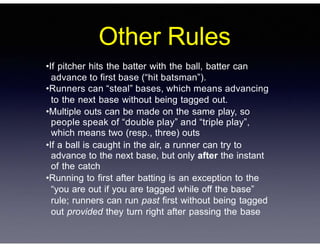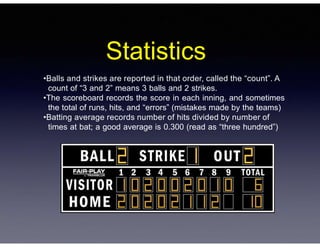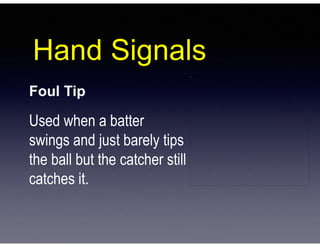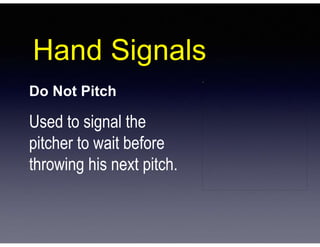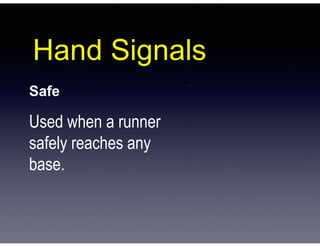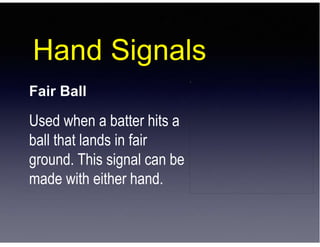Baseball is a team sport played between two teams of nine players each. The objective is to score more runs than the opposing team by hitting a pitched ball into play and running around four bases. Players use gloves, bats, and balls on a field with four bases laid out in a diamond shape. Batting teams alternate sending players to bat while fielding teams pitch and defend by trying to catch or tag batted balls and runners. Innings are composed of half innings for each team until one scores more runs after nine innings.
